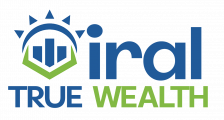Applying for a loan can seem like a daunting task, whether you’re seeking funds for a new home, a car, or consolidating debt. Understanding the lån application process can help alleviate some of the stress and prepare you for what lies ahead. In this article, we will guide you through the various stages of applying for a loan and provide tips on how to navigate each step effectively.
1. Determine Your Loan Needs
Before diving into the application process, it’s crucial to clearly define the purpose of the loan. Are you purchasing a house, funding a business, or paying off debt? Understanding your loan needs will help you determine the type and amount of loan you require.
- Home Loans: For purchasing or refinancing real estate.
- Auto Loans: For buying a new or used vehicle.
- Personal Loans: For various personal expenses like medical bills or home renovations.
- Business Loans: For funding business expansion or startup costs.
2. Check Your Credit Score
Your credit score is a vital component of your loan application. Lenders use it to assess your creditworthiness. Generally, a higher credit score translates to better låndk.dk terms and lower interest rates.
- Excellent Credit (750+):Often qualifies for the best rates and terms.
- Good Credit (700-749):Likely to receive favorable loan terms.
- Fair Credit (650-699):May face higher interest rates and less favorable terms.
- Poor Credit (below 650):May struggle to secure a loan or face high interest rates.
Obtain a copy of your credit report from the major credit bureaus (Equifax, Experian, and TransUnion) and check for any inaccuracies or issues that need addressing.
3. Research Lenders and Loan Options
Different lenders offer varying loan products and terms. It’s essential to shop around and compare offers to find the best fit for your needs. Consider the following types of lenders:
- Banks:Offer competitive rates but may have stricter requirements.
- Credit Unions:Typically offer lower rates but require membership.
- Online Lenders:Often provide a quick application process and flexible terms.
- Peer-to-Peer Lenders:Facilitate loans between individuals, sometimes with more relaxed requirements.
4. Prepare Required Documentation
Lenders require specific documents to process your loan application. The exact documentation may vary depending on the loan type and lender, but commonly required documents include:
- Proof of Identity:Passport, driver’s license, or other government-issued ID.
- Proof of Income:Pay stubs, tax returns, or bank statements.
- Proof of Employment:Employment verification letter or recent pay stubs.
- Credit History:Consent to review your credit report.
- Loan-Specific Documentation:For a home loan, this might include a purchase agreement; for a business loan, a business plan.
Ensure all documents are accurate and up-to-date to avoid delays.
5. Submit Your Loan Application
Once you’ve gathered all necessary documentation, you can submit your loan application. This process can often be completed online, in person, or over the phone, depending on the lender. Your application will include personal information, financial details, and the amount and purpose of the loan.
6. Loan Underwriting
After submission, your application enters the underwriting phase. During this process, the lender evaluates your financial status, credit history, and the details of your application to determine your eligibility. The underwriter may request additional documentation or clarification during this time.
- Pre-Approval:For some loans, you may receive a pre-approval letter, which indicates a preliminary approval based on your provided information. It’s not a guarantee but can be useful when negotiating with sellers or lenders.
7. Loan Approval and Terms
If your application is approved, the lender will present you with a loan offer. This offer will outline the loan amount, interest rate, repayment term, and any fees associated with the loan. Review the terms carefully to ensure they align with your financial goals and budget.
- Interest Rate:Fixed or variable rates can affect your monthly payments and overall loan cost.
- Repayment Term:Shorter terms usually mean higher monthly payments but lower total interest, while longer terms offer lower payments but more interest over time.
- Fees:Watch out for application fees, origination fees, or prepayment penalties.
8. Accept the Loan and Close the Deal
If you agree to the terms, you’ll need to formally accept the loan offer. This typically involves signing a loan agreement and completing any additional paperwork required by the lender.
For home loans, this step includes a closing process where you’ll sign the final documents, pay any closing costs, and receive the loan funds. For other types of loans, the process may be simpler, with funds disbursed shortly after acceptance.
9. Manage Your Loan Responsibly
Once your loan is approved and the funds are received, managing your loan responsibly is crucial. Make timely payments to avoid penalties and negative impacts on your credit score. Set up reminders or automatic payments to stay on track.
- Track Your Payments:Regularly review your loan statements and keep track of your payment schedule.
- Understand Your Terms:Be aware of the interest rate, repayment schedule, and any fees or penalties.
- Contact Your Lender:If you encounter financial difficulties, communicate with your lender as soon as possible to discuss potential solutions.
Conclusion
Understanding the loan application process can make the journey smoother and less stressful. By determining your needs, checking your credit score, researching lenders, and preparing your documentation, you’ll be well-equipped to navigate the application process with confidence. Remember, thorough preparation and responsible management are key to securing and maintaining a loan successfully.
If you have any specific questions or need further assistance with your loan application, don’t hesitate to reach out to a financial advisor or loan specialist. They can provide personalized advice and support tailored to your unique situation.




